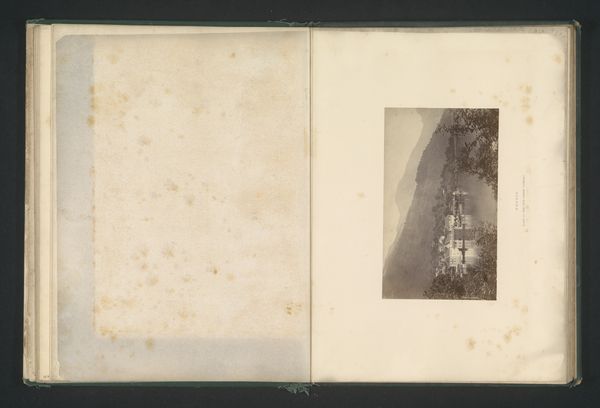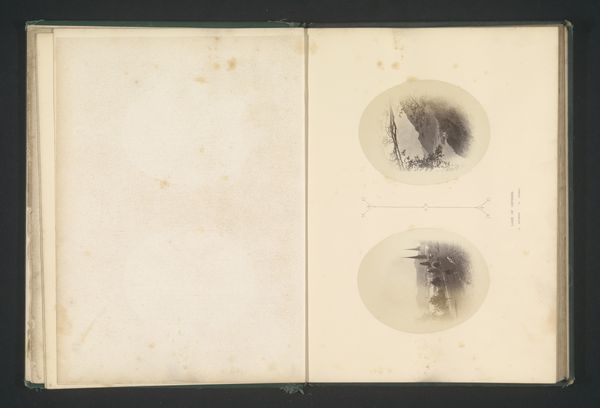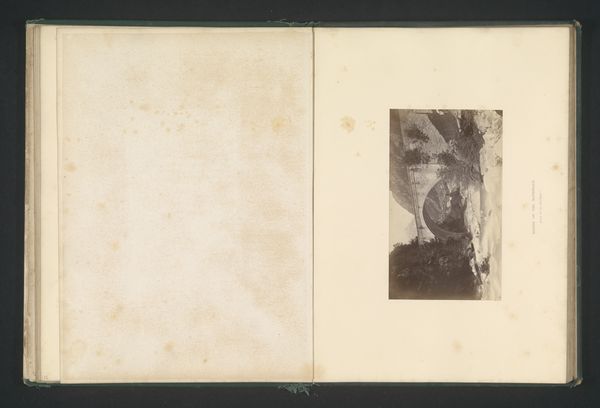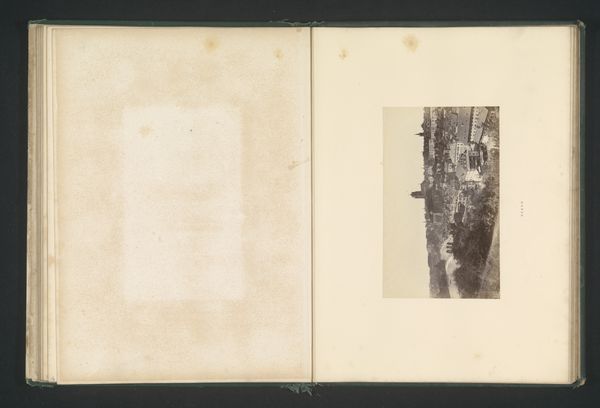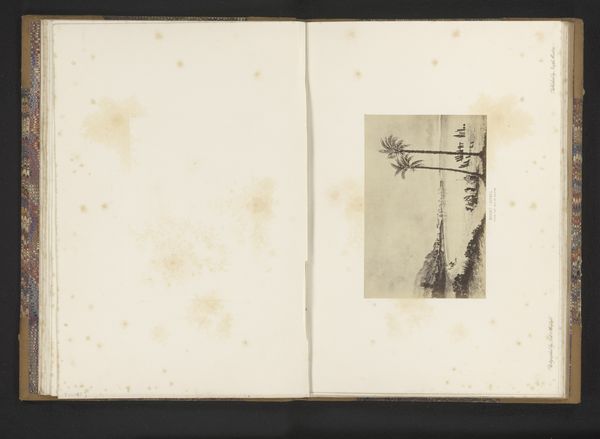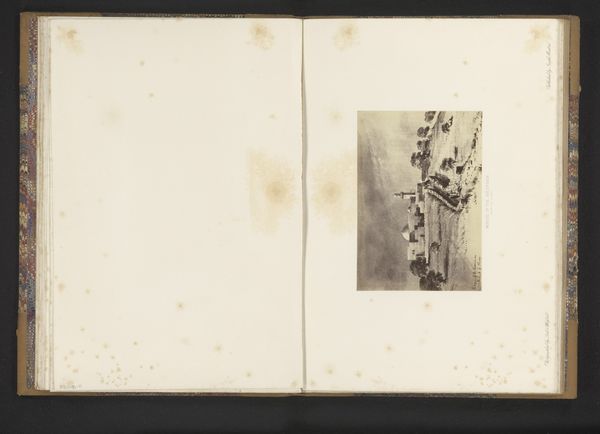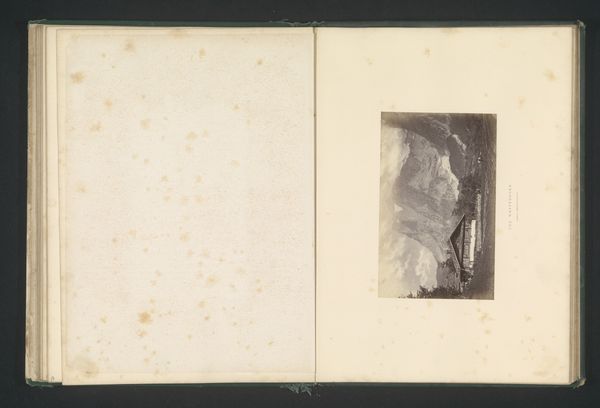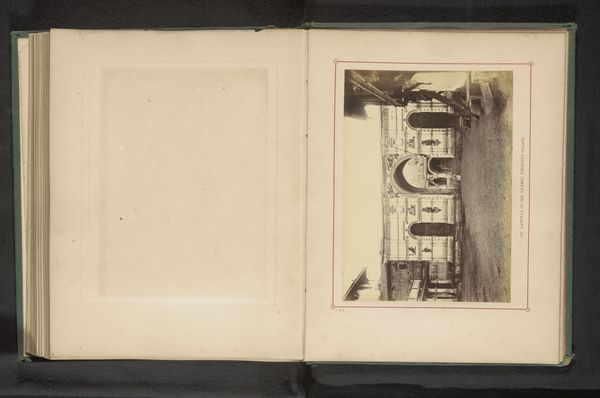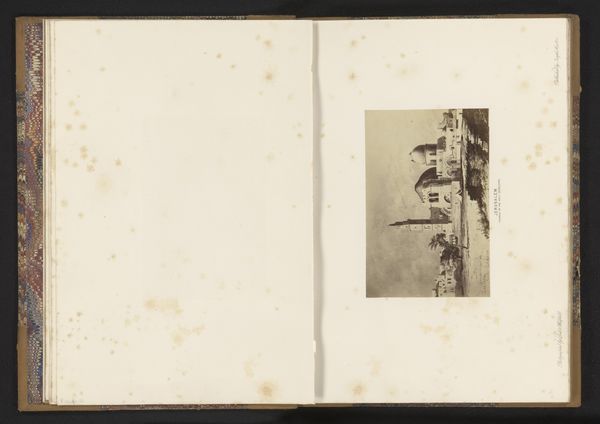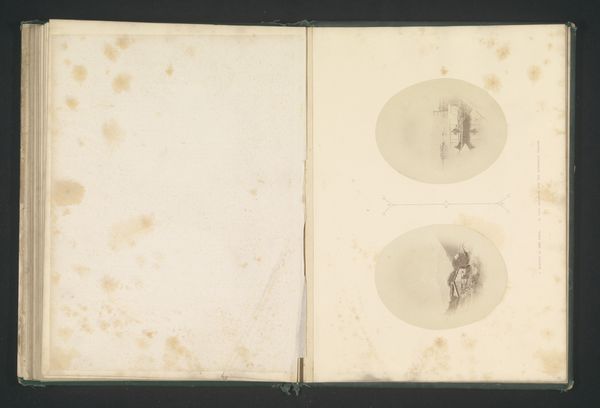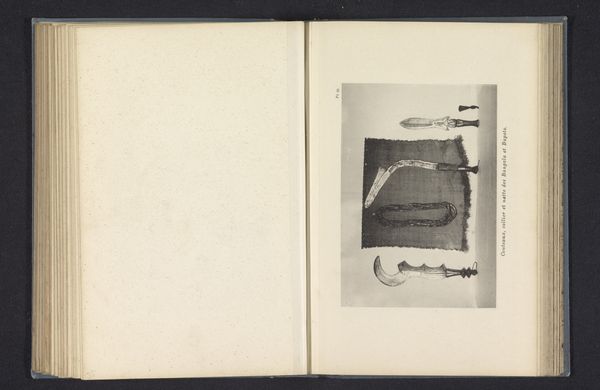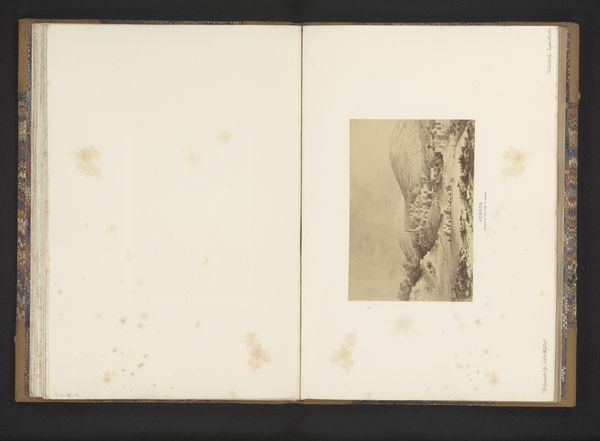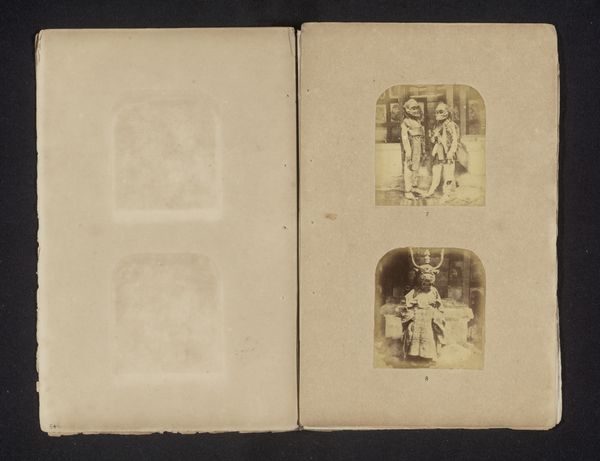
print, photography, albumen-print
# print
#
landscape
#
photography
#
cityscape
#
albumen-print
Dimensions: height 120 mm, width 95 mm
Copyright: Rijks Museum: Open Domain
Curator: This is an albumen print dating from before 1868, entitled "Gezicht op de Kapelbrug te Luzern", or "View of the Chapel Bridge in Lucerne" in English. Editor: It's almost ghostly, the way the image seems to float in those oval frames on the page. What's most striking is how muted the tonal range is, as if a memory is barely captured here. Curator: The albumen process, popular then, involved coating paper with egg white and silver nitrate, making it light-sensitive. This contributed to its delicate tonal range, yes. But beyond aesthetics, it's about documentation. Photography in the 19th century was tied to emerging tourism. Cities wanted to show off their sites. Editor: It's hard to divorce the aesthetic from the promotional element, though. Those slightly soft edges and muted tones seem to sentimentalize the site—making it a perfect keepsake of a beautiful, slightly unreal experience, carefully removed from everyday life and commodified as a memory to possess. Did those photographs and postcards erase the historical reality of Luzern for some visitors? Curator: Possibly, yes. Though such souvenir prints shaped the way people understood places, creating icons but perhaps simplifying complex realities. We also need to recall who controlled photographic access in this period; this bridge becomes not just a tourist view but evidence of social hierarchies shaping imagery, framing perception. Editor: Thinking about power makes the fragility of the photograph all the more poignant, then, as a capture of something beautiful, yes, but also as part of a bigger apparatus in a deeply unequal world. It asks us, still, who gets to do the viewing and to own the image of this place. Curator: Precisely. Examining its role in shaping early tourist culture gives the image greater social and political weight. I agree though, those subtle shades and the overall composition carry a poignant sentimentality that lingers today.
Comments
No comments
Be the first to comment and join the conversation on the ultimate creative platform.
